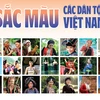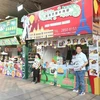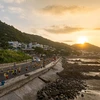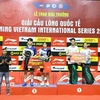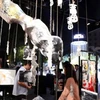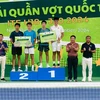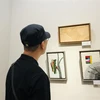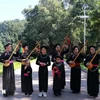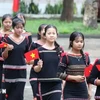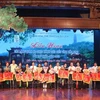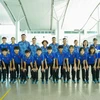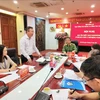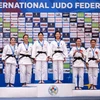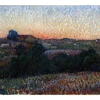A wide range of ways to preserve Champa architecture were discussed at a conference on the application of advanced technologies in preserving Champa relics in Quang Nam province on June 29.
At the conference, held by the Quang Nam People’s Committee in collaboration with the Russian Academy of Sciences, Russian and Vietnamese scientists presented reports on the structure and materials used to build My Son, a cluster of abandoned and partially ruined Hindu temples.
Russian scientists’ research and sample analyses revealed that the materials used to build the temples have different origins and characteristics from baked materials and the bricks are unevenly baked and contain sand and plant matter.
Prof. Sergey Nefedkin said My Son is not only Vietnam’s heritage but the world’s heritage and therefore, conducting research for its preservation and restoration is critical.
The main goal of the research team, the professor said, is to prevent decay from natural elements and uncover materials that can be used to restore the original form of the temples.
The professor proposed hardening the surfaces with special chemicals to protect layers of brick beneath the surface.
Vu Ngoc Hoang, Deputy Head of the Party Central Committee’s Commission for Popularisation and Education, said the Russian scientists’ results were very encouraging.
He said that the restoration must maintain the ancient characteristics of the relics.
Le Van Thanh, Vice Chairman of the Quang Nam People’s Committee, said the province has been coordinating with sectors and scientists to discover ancient secrets in building temples to preserve and restore structures of the Champa culture, returning them to their original value.
Quang Nam is home to many international-level Champa architectures. The most notable are thousand-year-old towers, reflecting the phenomenal creativity of the Champa culture.
Temples and clusters of temples in Chien Dan, Khuong My, Bang An, the Dong Duong Buddhist Institute, My Son are attracting scientists to discover the ancient secrets.-VNA
At the conference, held by the Quang Nam People’s Committee in collaboration with the Russian Academy of Sciences, Russian and Vietnamese scientists presented reports on the structure and materials used to build My Son, a cluster of abandoned and partially ruined Hindu temples.
Russian scientists’ research and sample analyses revealed that the materials used to build the temples have different origins and characteristics from baked materials and the bricks are unevenly baked and contain sand and plant matter.
Prof. Sergey Nefedkin said My Son is not only Vietnam’s heritage but the world’s heritage and therefore, conducting research for its preservation and restoration is critical.
The main goal of the research team, the professor said, is to prevent decay from natural elements and uncover materials that can be used to restore the original form of the temples.
The professor proposed hardening the surfaces with special chemicals to protect layers of brick beneath the surface.
Vu Ngoc Hoang, Deputy Head of the Party Central Committee’s Commission for Popularisation and Education, said the Russian scientists’ results were very encouraging.
He said that the restoration must maintain the ancient characteristics of the relics.
Le Van Thanh, Vice Chairman of the Quang Nam People’s Committee, said the province has been coordinating with sectors and scientists to discover ancient secrets in building temples to preserve and restore structures of the Champa culture, returning them to their original value.
Quang Nam is home to many international-level Champa architectures. The most notable are thousand-year-old towers, reflecting the phenomenal creativity of the Champa culture.
Temples and clusters of temples in Chien Dan, Khuong My, Bang An, the Dong Duong Buddhist Institute, My Son are attracting scientists to discover the ancient secrets.-VNA
